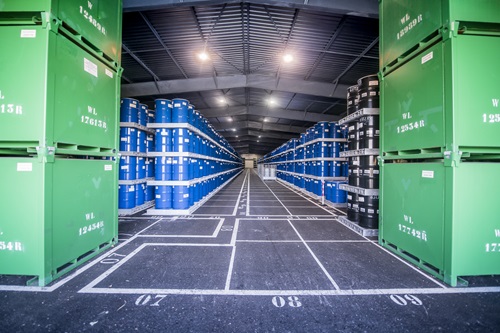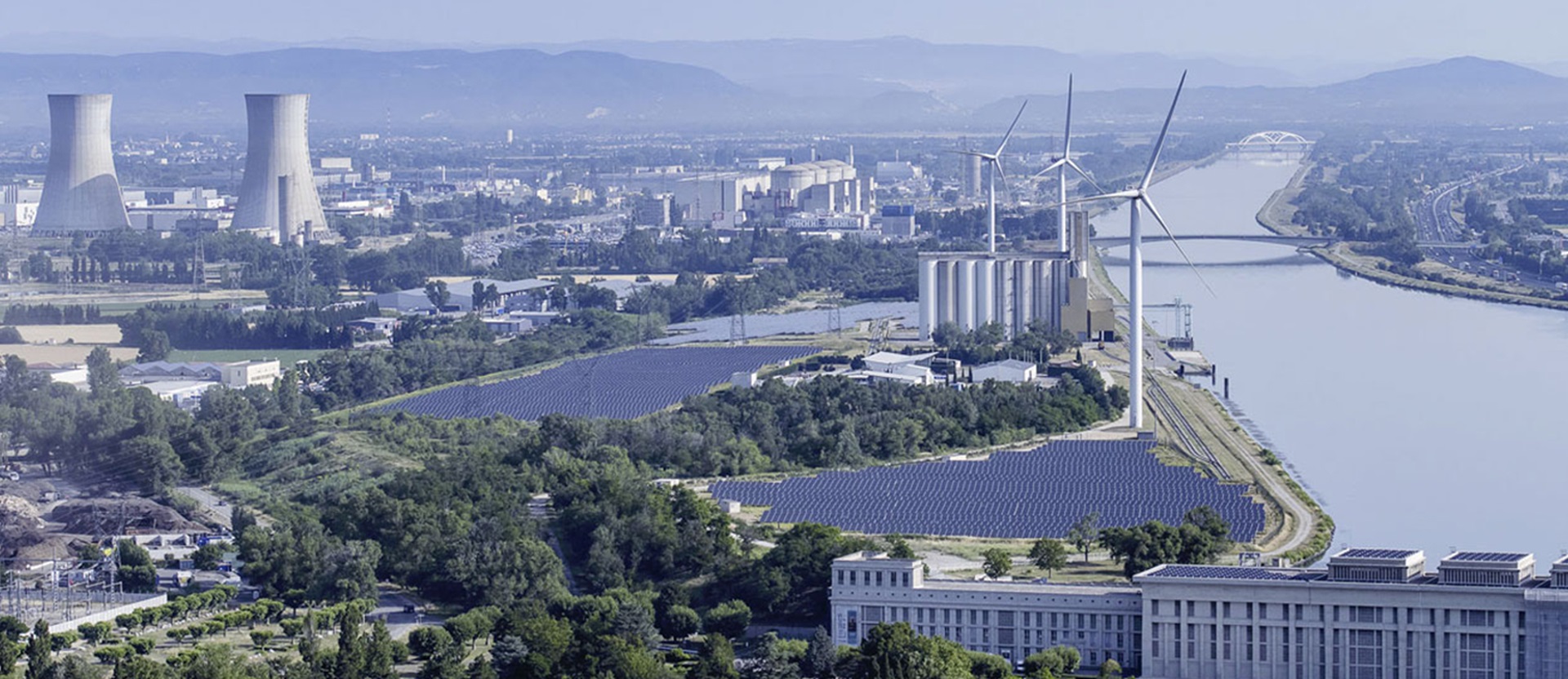
Recycled uranium for low-carbon electricity
A source of energy…
Orano contributes directly to this recycling by separating the nuclear materials and waste contained in used nuclear fuels. The uranium still present in used nuclear fuel, referred to as reprocessed uranium (RepU) [French: Uranium de Retraitement – URT], accounts for 95 % of total used fuel and is a recyclable material with characteristics comparable to those of natural uranium. It has to be re-enriched and can then be used in the fabrication of fuels to generate low-carbon electricity. These fuels have the same general characteristics as natural uranium fuels and thus have considerable energy potential: 100 g of uranium produces as much energy as 1 metric ton of oil
… that has seen widespread use depending on the state of the uranium market
 With the price of uranium on the rise (spot price at over 40 dollars per pound compared to 20 dollars three years ago), the recycling of uranium is now more of a relevant topic than ever, in particular as it allows savings to be made on raw materials.
75 reactors worldwide have used or already use RepU.
With the price of uranium on the rise (spot price at over 40 dollars per pound compared to 20 dollars three years ago), the recycling of uranium is now more of a relevant topic than ever, in particular as it allows savings to be made on raw materials.
75 reactors worldwide have used or already use RepU.
EDF used RepU from 1994 to 2013 in 4 reactors of the Cruas nuclear power plant. This allowed 4,000 metric tons of RepU to be recycled, corresponding to a similar saving on natural uranium. EDF then ceased these operations as then price of natural uranium had collapsed, making RepU no longer competitive. EDF has recently announced the resumption of RepU recycling from 2023 for use in the 4 reactors of the Cruas nuclear power plant then in 1,300 MW reactors (as of 2027). This will take the share of French nuclear electricity that comes from recycled materials from 10% currently to over 20%.
Recyclable uranium, a strategic reserve
The separation and purification of the uranium contained in used fuels are carried out on the Orano La Hague site. The uranium is then in liquid form (uranyl nitrate). It is subsequently transported to the denitration plant (TU5 facility) on the Tricastin site to be transformed and reconditioned as reprocessed uranium oxide (U3O8 URT) in solid and stable form. Commissioned in 1996, this facility allows an appropriate interim storage solution to be proposed to French and international utility customers prior to reuse as recycled nuclear fuel.

Currently, nearly 34,000 metric tons of RepU are being held in interim storage on the Tricastin site and are publicly declared in the French national inventory on an annual basis. 6,870 metric tons are the property of Orano, originating from processing campaigns for fuel from Graphite-moderated Gas-Cooled Reactors [French: réacteurs Uranium Naturel Graphite Gaz – UNGG] reactors and recycling & processing contracts concluded in the 1990s. This is a strategic reserve with a very high energy potential (the equivalent of 340 million metric tons of oil) and thus an element that can make a contribution to supplies of low-carbon energy.
Recycling in Russian reactors
While Orano has the capacities to re-enrich RepU at its Georges Besse II plant, it does not have the equipment to carry out the preliminary phase of conversion. Furthermore, Orano is not an operator of nuclear power plants either. While interest in the use of recycled uranium is growing with the increase in the price of uranium, Orano has signed a contract in 2020 with Rosatom (Russian operator) to supply it with 1,150 metric tons of recycled uranium to be converted then re-enriched at its Seversk plant in Russia. This plant, used both for RepU of Russian and foreign origin, has recently been modernized (in particular for the management of waste and effluent resulting from uranium conversion and enrichment operations). Fuels produced from recycled uranium supplied by Orano will be used in Rosatom reactors. The RepU expedition to Russia took place in several shipments, the first of which was already carried out in early 2021 and the last in September 2022. The contract is now closed.
- Understanding Nuclear Energy Nuclear energy makes it possible to produce low-carbon, competitive, and continuous electricity
- Nuclear Energy and the Climate Challenge The capacity of nuclear energy to guarantee low-carbon electricity generation is invaluable to deal with the climate emergency
- Proven expertise in recycling and nuclear waste management The nuclear industry manages its conventional and radioactive waste using very rigorous, very carefully controlled methods. Orano has been transforming and recycling nuclear materials for over 50 years.